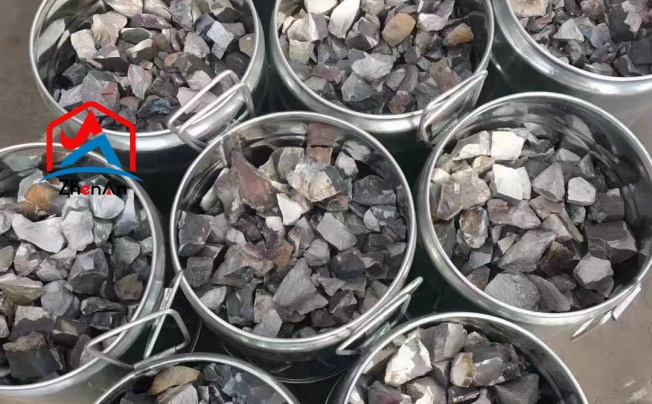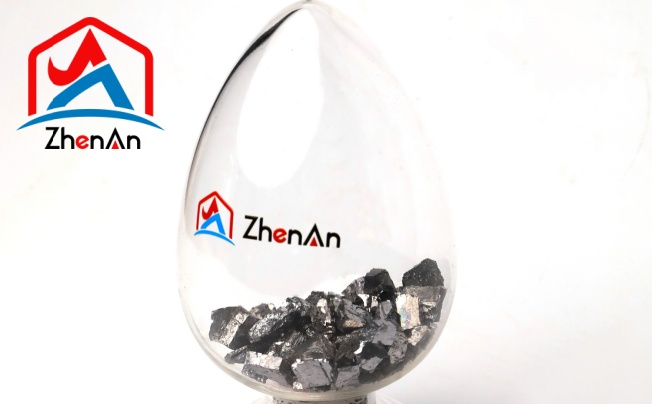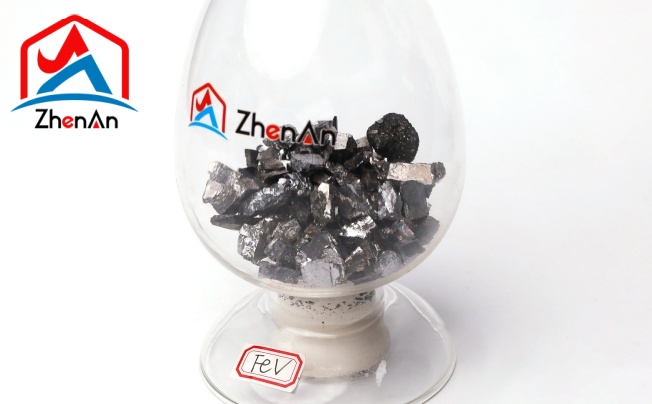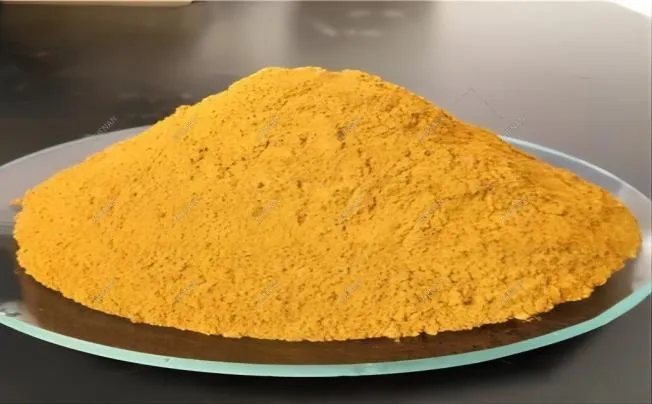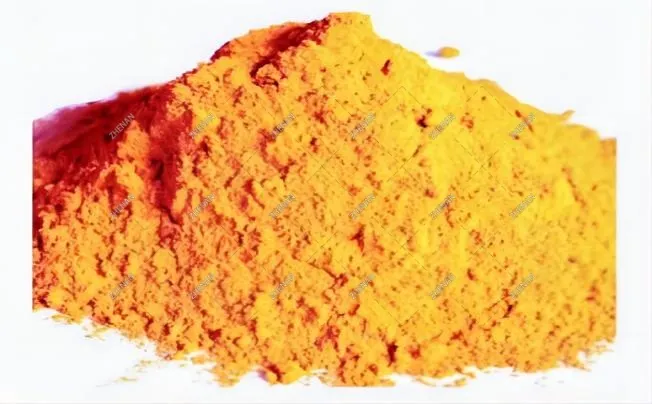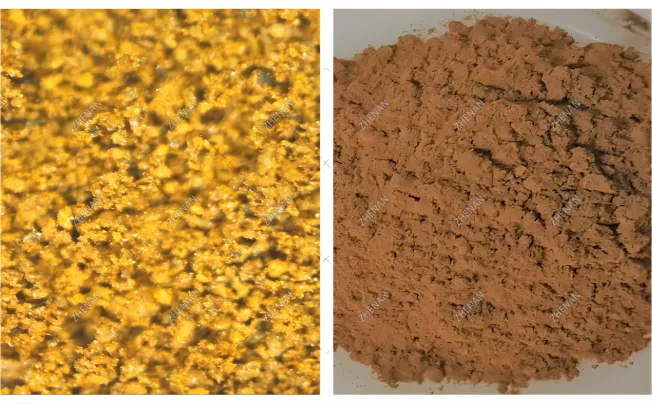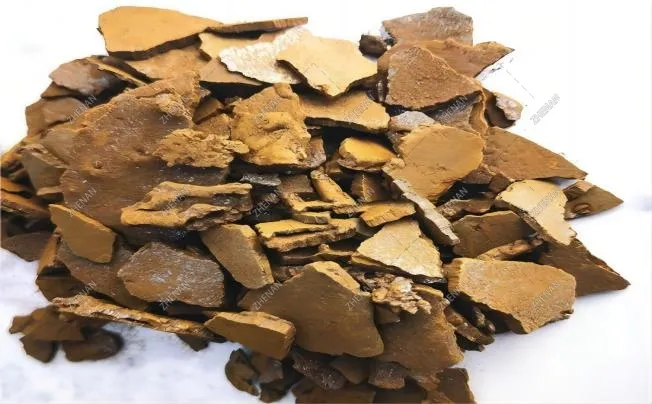What is Vanadium Pentoxide Flake?
Vanadium pentoxide (V2O5) in the form of flake is referred to as flake vanadium pentoxide. Vanadium and oxygen combine to form vanadium pentoxide. It is frequently employed as a precursor to produce other vanadium compounds as well as a catalyst in a variety of chemical reactions. Vanadium pentoxide flakes are frequently used in chemical production, ceramics, energy storage, and other sectors. They can be found in the form of powder or solid flakes.
Properties and Chemical Composition
Because of their unique characteristics, vanadium pentoxide flakes can be applied to a wide range of situations.
Physical appearance: Vanadium pentoxide flakes may resemble scales or flakes in their flaky nature.
Color: Typically orange or yellow.
Chemical formula: Vanadium pentoxide has the formula V2O5, meaning that two vanadium atoms and five oxygen atoms make up its composition.
High melting point: At roughly 690°C (1274°F), vanadium pentoxide has a comparatively high melting temperature.
Catalytic activity: Because of its catalytic qualities, it can be applied to a variety of chemical processes.
Electrochemical characteristics: In certain electrochemical systems, such as vanadium redox flow batteries, vanadium pentoxide can be employed as an electrode material.
Chemical Composition:
| Element | Grade
|
|
| V₂O₅ | Min | 98.00% |
| SiO₂ | Max | 0.20% |
| Fe | Max | 0.40% |
| P | Max | 0.05% |
| S | Max | 0.10% |
| Na₂O+K₂O | Max | 0.50% |
Vanadium Pentoxide Flakes Preparation Technique
1. To create the first combination, add bone coal through additions to the sulfuric acid solution;
2. To the initial combination, add deionized water, stir, and separate the liquid from the solid;
3. Then, stir the ammonia bicarbonate and add it to the first supernatant liquid after letting the clear liquid stand to separate the first precipitate; this will provide the second supernatant liquid.
4. To obtain a third precipitate and a third supernatant, add calcium hydroxide and/or calcium oxide to the second supernatant.
5. To get a vanadium solution, rinse the ion exchange resin with sodium hydroxide once it fills up.
6. To make flake vanadium pentoxide, add ammonium chloride, hydrogen peroxide, and a pH adjuster to the vanadium solution. Centrifuge the precipitate ammonium metavanadate, which subsequently breaks down to produce a flake.
What Industry is Vanadium Pentoxide Flakes Used In?
Energy storage: Vanadium redox flow batteries (VRFB), rechargeable batteries used for large-scale energy storage, are made of vanadium pentoxide sheets. An essential part of the VRFB electrolyte solution, which stores and releases electrical energy, is vanadium pentoxide.
Catalysis: A common catalyst for a variety of chemical processes is flake vanadium pentoxide. They can encourage oxidation, dehydrogenation, and other processes that lead to the synthesis of compounds such as phthalic anhydride, sulfuric acid, and maleic anhydride.
Ceramics: The ceramics industry uses flakes of vanadium pentoxide as opacifiers and colorants. They can give ceramic glazes and pigments shades of yellow, orange, or red.
Chemical manufacturing: Vanadium compounds, including vanadium oxide catalysts, vanadium salts, and alloys, are made from vanadium pentoxide flakes. These substances find use in numerous chemical reactions and sectors of the economy.
Glass: The glass industry can employ vanadium pentoxide flakes as a colorant to create various shades of green glass.
Precautions for Saving Vanadium Pentoxide Flake
When storing vanadium pentoxide, extra care must be taken. It needs to be kept out of the heat and the presence of fire in a cold, well-ventilated facility. It is recommended that vanadium pentoxide be stored away from combustible items, acids, and food chemicals. Appropriate materials should be used in storage rooms to avoid leaks.
How to Dissolve Vanadium Pentoxide Flake?
The vanadium pentoxide flakes can be dissolved in water or any appropriate solvent. Vanadium pentoxide dissolves readily in water, and stirring or boiling the mixture will quicken the dissolution process. You can carry out the below steps:
Get the solvent ready. Fill a container with the necessary amount of water or another appropriate solvent. The amount of vanadium pentoxide flakes you wish to dissolve will determine how much solvent you need.
Add vanadium pentoxide flakes. Stir the solvent constantly as you gradually add the flakes. It could take some time for the flakes to completely melt.
Stir or warm the mixture. You can keep stirring the mixture to speed up the dissolution process if needed. As an alternative, slow heating can be employed to accelerate dissolution. But take care not to apply too much heat or raise the solvent’s boiling point.
Complete dissolution: Keep heating or swirling the solvent until all of the vanadium pentoxide flakes have dissolved. Depending on the concentration, the solution should be either transparent or pale in color.
Health Hazards and First Aid Measures
It’s vital to treat vanadium pentoxide flakes carefully because they may present some health risks.
Irritation: The skin, eyes, and respiratory systems may become irritated by vanadium compounds, such as vanadium pentoxide. Allergies or irritation may result by inhaling dust or fumes, or from direct contact with the flakes.
Vanadium compounds are thought to be poisonous and may be harmful to people’s health. Extended or high exposure to vanadium pentoxide flakes may have adverse effects on the liver, kidneys, and lungs, among other organs.
Effects on the Respiratory System: Breathing in dust or flakes of vanadium pentoxide can lead to respiratory problems such as lung inflammation, coughing, and shortness of breath. More serious respiratory issues could arise from extended exposure to high amounts of vanadium pentoxide dust or fumes.
Carcinogenicity: According to certain research, vanadium pentoxide and other specific vanadium compounds may be carcinogenic. To prove a clear connection between vanadium compounds and cancer, more study is necessary.
First aid and protective measures
Respiratory protection: When there’s a chance of coming into contact with dust, a dust mask (full face mask) needs to be worn. When performing an emergency rescue or evacuation, wear an air respirator.
Eye protection: Included is respiratory protection.
Put on tape-protective clothes for body protection.
To protect your hands, put on rubber gloves.
Additional protection: It is not permitted to eat, drink, or smoke on the job site. Shower off after work. Garbage-contaminated clothing should be stored separately and washed before reuse. Perform both routine and pre-employment physicals.
If there is skin contact, remove any contaminated clothing right away, wash well under running water, and consult a doctor.
Make eye contact, lift your lids, rinse with saline or running water, and consult a doctor.
Inhalation: Quickly get outside into fresh air while maintaining an open respiratory tract. If breathing becomes difficult, administer oxygen right away. As soon as breathing stops, start artificial respiration. Seek out medical assistance.
Ingestion: Make sure you throw up, drink lots of warm water, and consult a doctor.




